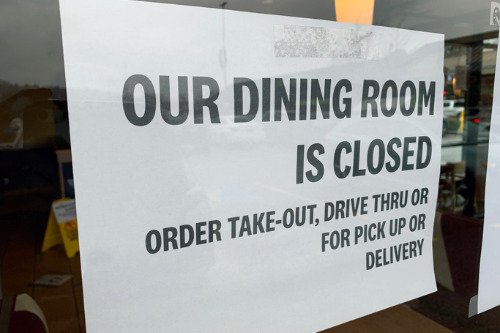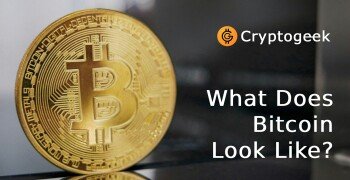Ex-Goldman Sachs Manager: Bitcoin Will Cost $1,000,000 In Three Years


A former Goldman Sachs hedge fund manager Raoul Pal claims Bitcoin is a future of our entire exchange medium. In his research published on March 30, Pal says that he believes that Bitcoin's price will reach $1 million value in a course of three years.
Pal's 100+ pages article (most of the pages are occupied with graphs) was featured in the GMI Unfolding Monthly issue. Initially, it was published exclusively for GMI (Global Macro Investor) clients. However, later Pal decided to share this piece to a large audience as he believes that these days of the upcoming crash of the world financial system the information in this article can be really helpful.
A Short Recap. Part 1. Recession
Pal describes coronacrisis as the biggest event of all of our lifetimes. According to Pal, currently, we are in the first phase (panic). After a phase of hope (correction) we are going to face a final phase — insolvency. This phase will change "everything". The author implies that this change won't be another financial crisis but the kind of crisis that will change the very system of exchange. Pal claims to be a pragmatist rather than an ideologist and his research is aimed only at helping people to get prepared for the things to be.

Then Pal provides numerous graphs showing the numbers of people diagnosed with coronavirus in different countries and the progressions of the death rates. Pal is stressing two things. First off, the models lie and we cannot forecast effectively because we never have the full data to make accurate predictions. The second thing is that obviously, the forecast cannot be optimistic. Pal says that for the economy the current situation is the worst in 150 years. He provides a variety of graphs showing that in China sales, investments, and production rates have dropped unprecedentedly in comparison to a couple of past decades. The same happened in Australia, Hong Kong, Japan, Europe, the USA, and so on. Raoul notes that Europe and the UK experience the worst downfall in its history. Then Pal reminds that he cites the stats relevant for the middle of March not knowing how the things will look later.
In the next chapter, Pal provides data on QoQ GDP declines and market fall percentages for previous several recessions. He cites the financial crises of 1970, 1974, 1980, 2001, and 2008, and then adds the numbers relevant for March 2020. The comparison demonstrates that this time QoQ GDP drop is way higher (25% compared to the next historic maximum —8% in 1980) but the market fall (34% as of the time of writing) is quite average. It means that the peak is ahead. The author uses the 1929 recession graph as an example. The initial market panic was followed by a 20% rally and then the market nosedived. Raoul highlights a row of similarities between the 1929 and 2020 situations, citing both crises were results of alike decades (two peaks and a bubble). The lines on the graphs of two recessions resemble each other quite identically. Then Pal adds that this time the recession is faster than it was in 1929. If the current graphs keep on repeating the previous trends, we will see a correction in summer with a rally lasting up to 6 months, Pal says. But not more.
The main point, according to Pal, is that this recession will be happening during several crises that already took place in the past. It will be the unprecedented corporate credit bubble (Pal referred to it as a Doom Loop), the buyback crisis, the pension crisis, the auto loan bubble, the Indexation bubble, the student loan bubble, the ETF/market structure bubble, the Dollar Standard Bubble, and the Central Bank Bubble.
The market structure itself, combined with trade wars, and pandemic make the situation extremely bad. However, Pal says that the existing financial system would implode one day anyway. Then the author provides a detailed explanation of all the factors leading to these crises and how things will get worse and worse. The U-shape and V-shape are not going to happen this time. The L-shape is probably what we will see at best, according to Pal. Even if the second wave of the virus isn't coming, the very fear of this wave will be devastating for the economy. For at least a year, the economy won't recover. Pal cites Wuhan and Beijing as the cities where people have changed their behavior and are still scared to show up on the streets without the need.
As Pal points out, no one knows when to stop to worry. When will we attend concerts or sports events again? When will we stop fearing crowds, airports, etc? There is no answer. The locked borders and broken supply chains are leading to contraction. After the epidemic peak, the workers will go back to work but soon they will face the lack of demand for the production. The cash flow is too small to cope with debts.

Pal believes that there will be a string of defaults and bailouts. In general, he calls the probable future recession the most serious global solvency crisis. The debts will transfer from the private sector to the government sector. The central banks around the world will have to print money. The government-issued stimulus won't compensate for the vanished demand. The governments give money to citizens and companies but they have no real plan because no one was prepared for such a situation. Cash injections will continue, summing up to tens of trillions of dollars but there will be no horizon. The next thing that will come is debt deflation.
After a short summer rally, there will be unemployment, bankruptcies, export decline, close down of restaurants and retailers, S&P 500 cash flow will short, etc. Then Pal concludes that most probably the existing financial system is going to die gradually. The payment option of the future according to Pal is Bitcoin. The way to preserve money is gold.
A Short Recap. Part 2. Changes
In the chapter named "The Future", Pal states that gold will still have its value when fiat currencies will fall. To confirm it, he provides graphs showing how well gold was performing against fiat money in the past and lately, too. Considering the fact that bond yields will have zero or a negative value, gold will become a notable means of a store of value. Pal believes that gold will go up to x3 to x5 in the next 5 years or even earlier. In three years the price of Bitcoin can reach $1,000,000, Pal says. However, he adds that due to the instability of USD, comparisons with the dollar are "meaningless".
Raoul explains that the significance (and value) of Bitcoin might rise because it is not only a payment means or a store of value but a tamper-proof, verified, safe, and trusted accounting system. Pal believes that the qualities of the Bitcoin network will make it a monetary system of the future. He adds that other cryptocurrencies and digital central bank currencies will be part of this system, as well. In the next two years, Bitcoin is going to hit $100k, Pal says. He urges readers to transfer to storing their money in gold and buy BTC. Then, he goes further in explaining the parallel between the modern days and the 1930s recession, adds a bunch of tweets and graphs about coronacrisis that he finds worthy, and continues to provide details explaining his point of view.
Conclusion
Although Raoul Pal calls his insights a madman's writings, he is a high profile author and expert. He has been advising hedge funds since 1991. We are not going to list all his merits here. You can find them in the final part of his report.

We believe that even considering the thorough argumentation and the high professionality of Pal there is still a little chance that somewhere in his logic there's a gap. As he himself said models don't work due to the lack of some critical data. Who knows which piece of data he didn't consider in his research? We don't have an answer. Therefore, we believe that Pal's work deserves your attention although we call to read it carefully and with caution. Despite the globality of the processes Pal speaks of, his text is still a piece written by a single person, and it is his (reasoned) opinion.
The prognosis of BTC reaching $1 mln can seem optimistic or joyful. Nevertheless, the entire body of the article is dedicated to a very dark picture of the future. The predicted BTC price (in dollars) is not only about Bitcoin's future significance but also about the insignificance of fiat money as we knew them until now.









Here are no comments yet. Be the first!